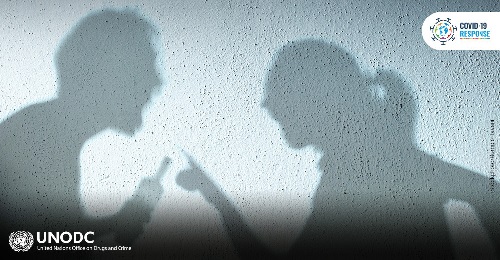Violence against women
 |
Gender-based violence by the intimate partner, in its most common form, is highly prevalent in many societies.
Emergency situations such as the current pandemic, in which some countries have imposed quarantine and social distancing measures, may increase the risk of violence against women and girls by the intimate partners.
In such cases, staying at home is not the safest, since the home is often where there is a risk of homicide, physical, sexual, psychological, economic abuse, neglect and coercive control.
In the context of unemployment and other adverse economic impacts associated with the COVID-19 pandemic, women and girls may be particularly vulnerable to economic abuse and deprivation during this period of confinement.
There may be particular risks for women who are unable to buy essential products such as food and medicine because they are prevented by their partners from leaving home, fear leaving their children with them or cannot afford to shop.
Measures to contain COVID-19 are adopted uniformly, but disproportionately affect certain groups, including victims and survivors of domestic violence, homeless women, older women and women and girls with disabilities.
In addition, women and girls deprived of their liberty, displaced persons, refugees, asylum seekers, migrants and those living in conflict areas are particularly at risk during the pandemic.
Evidence from refugee camps and humanitarian assistance zones confirms that where families or individuals are kept or hosted nearby for long periods, rates of gender-based violence against women and girls are high.
COVID-19, therefore, has posed many challenges to these groups in both the emotional and economic spheres that need to be overcome and the violence that is now emerging as a dark feature of this pandemic needs to be combated.